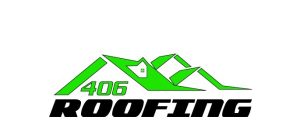At 406 Roofing,we offer individualized solutions for residents and businesses, and assist in selecting from various alternatives for roofing services modernized for convenience. Every property, whether residential or commercial, first and foremostneeds a dependable and durable roofing system. It ascertains the necessary defense from external elements such as rain, sun, and high winds the safety and comfort in the establishment, and the economical energy use. Even a house of sophisticated architecture will be susceptible to serious insulation issues and leaks without a properly built roofing system.
1.Why a Reliable Roof Matters
- Protection & Safety – Shields your home or business from weather damage.
- Energy Efficiency – Helps regulate indoor temperatures, lowering energy bills.
- Curb Appeal – Enhances the look and market value of your property.
- Durability – Prevents costly repairs and extends the lifespan of your building.
With the right roofing contractor and materials, you can ensure that your roof remains strong, stylish, and sustainable for years to come.
If you’re looking for professional roofing contractors in Montana, 406 Roofing offers expert installation, repair, and maintenance to ensure long-lasting protection for your property
2. Why Roofing Solutions Matter
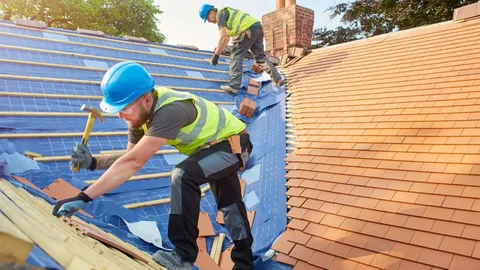
Your roof isn’t just a cover—it’s the most essential part of your property’s defense system. A well-built and properly maintained roof keeps your home or business safe, energy-efficient, and visually appealing. Investing in the right roofing solution ensures long-term protection, reduces repair costs, and enhances overall property value.
Key Reasons Roofing Solutions Are Important
- Weather Protection – A durable roof shields against rain, snow, hail, and strong winds, preventing water damage and mold growth.
- Energy Efficiency – Modern energy-efficient roofing materials help reduce heat loss in winter and block excessive heat in summer, lowering utility bills.
- Increased Property Value – A stylish roof enhances curb appeal and boosts resale value for both residential and commercial properties.
- Long-Term Durability – High-quality roof installation and replacement extend your roof’s lifespan, reducing the need for frequent repairs.
- Comfort & Safety – A strong roofing system creates a safer, more comfortable living or working environment.
3. Common Roofing Problems Commercial Property Owners Face
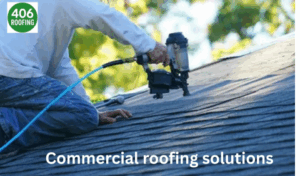
Commercial roofs are built to handle large structures and heavy usage, but they are not immune to problems. Over time, constant exposure to weather, poor maintenance, and natural wear can create issues that disrupt business operations and lead to costly roof repair or replacement. Identifying these challenges early is essential for protecting your investment and ensuring business continuity.
Frequent Commercial Roofing Issues
- Water Leaks & Ponding Water
Flat commercial roofs often collect water if drainage systems are not working properly. Standing water can seep through seams, cause leaks, and weaken the roof membrane. - Roof Membrane Damage
Materials like TPO, EPDM, or PVC can blister, crack, or tear due to weather extremes or foot traffic from HVAC maintenance teams. Damaged membranes reduce the roof’s ability to protect the building. - Storm & Wind Damage
Heavy rain, hail, and high winds can tear off roof coatings, loosen flashing, and damage insulation, making emergency commercial roof repair a necessity. - Poor Insulation & Energy Inefficiency
Inadequate insulation on commercial roofs can lead to excessive heating and cooling costs. Energy-efficient commercial roofing solutions help lower operational expenses. - Clogged Drains & Gutters
Commercial roofs often span large areas, making drainage critical. Blocked drains can cause structural stress, leaks, and even roof collapse in extreme cases. - Roof Age & Wear
Over time, all roofs deteriorate. A commercial property with an old roof may require frequent repairs, making a full roof replacement a more cost-effective option.
Why Businesses Should Act Quickly
- Prevents operational disruptions caused by roof leaks or failures.
- Protects valuable assets, inventory, and equipment.
- Reduces long-term repair and replacement costs.
- Maintains safety and comfort for employees and customers.
Regular commercial roof inspections, maintenance, and timely repairs are critical to extending the lifespan of your building and avoiding major business losses.
4. Types of Commercial Roofing Solutions
Commercial properties require specialized roofing systems that can handle large surface areas, heavy equipment (like HVAC units), and long-term durability. The right commercial roofing solution not only protects the building but also reduces energy costs and minimizes maintenance needs.
Here are the most popular options for businesses, warehouses, and industrial facilities:
Flat Roofing Systems
- Built-Up Roofing (BUR) – Often called “tar and gravel” roofing, this traditional option offers strong protection through multiple layers. It’s cost-effective and works well for large, flat commercial buildings.
- Modified Bitumen Roofing – A durable system reinforced with fiberglass or polyester, offering flexibility and resistance against harsh weather conditions.
Single-Ply Membrane Roofing
- TPO (Thermoplastic Olefin) – Highly popular for commercial use, TPO is energy-efficient, UV-resistant, and cost-effective. It reflects heat, reducing cooling costs in large facilities.
- EPDM (Ethylene Propylene Diene Monomer) – Known as “rubber roofing,” EPDM is durable, weather-resistant, and easy to maintain, making it ideal for warehouses and office buildings.
- PVC Roofing – Strong and resistant to chemicals, fire, and water damage. It’s commonly used in restaurants, factories, and buildings where exposure to grease or chemicals is a concern.
Metal Roofing Solutions
- Metal roofs (steel, aluminum, or copper) are highly durable and can last 40+ years with proper maintenance.
- They are resistant to fire, wind, and extreme weather, making them a strong long-term investment.
- Modern commercial metal roofs can be designed with coatings that improve energy efficiency.
Green & Eco-Friendly Roofing Solutions
- Cool Roofing Systems – Reflect sunlight and reduce heat absorption, lowering energy bills.
- Green Roofs – Covered with vegetation, they provide insulation, reduce stormwater runoff, and promote sustainability—often a great choice for urban businesses.
- Solar Roofing – Incorporates solar panels into the roof system, generating renewable energy and reducing electricity costs.
Roof Coatings & Restoration
- Instead of replacing the entire roof, commercial properties can benefit from roof coatings.
- Elastomeric coatings, silicone, or acrylic coatings extend roof life, seal leaks, and improve energy efficiency.
- This is a cost-effective option for businesses looking to restore rather than replace.
Key Takeaways
- Flat roofs (BUR, Modified Bitumen) = Budget-friendly and reliable.
- Single-ply membranes (TPO, EPDM, PVC) = Energy-efficient and low maintenance.
- Metal roofing = Long lifespan and excellent durability.
- Eco-friendly solutions (cool roofs, green roofs, solar) = Reduce costs and support sustainability.
- Roof coatings = Affordable restoration without full replacement.
Choosing the right commercial roofing solution depends on factors like climate, building size, budget, and long-term business goals. Working with experienced commercial roofing contractors ensures you get the best system tailored to your needs.
5. Choosing the Right Roofing Solution for Your Business
Selecting the right roofing system is one of the most important decisions for any business owner, property manager, or facility director. The roof impacts not only the safety of your building but also your long-term operating costs, energy efficiency, and overall business continuity. With so many commercial roofing options available—TPO, EPDM, PVC, metal, and more—choosing wisely ensures you get the best return on investment.
Factors to Consider When Selecting a Commercial Roof
- Building Type & Structure
- Warehouses, retail spaces, industrial facilities, and office buildings each have unique needs. For example, flat roofing systems are ideal for large industrial spaces, while metal roofing is better for durability in manufacturing facilities.
- Climate & Weather Conditions
- In areas with heavy snow or rain, durable materials like EPDM or metal roofs are excellent choices.
- Hot climates benefit from reflective, energy-efficient roofing like TPO or cool roofs.
- Budget & Long-Term Costs
- While some roofing materials are more expensive upfront, they can save money over time by reducing maintenance costs and improving energy efficiency.
- For businesses on a budget, roof coatings can extend life without full replacement.
- Energy Efficiency Goals
- If lowering operational costs is a priority, consider energy-efficient roofing solutions such as TPO, reflective coatings, or solar roofing.
- These options reduce heating and cooling expenses, making them ideal for commercial buildings with large energy needs.
- Maintenance & Lifespan
- Some systems, like EPDM, require minimal maintenance and have a long lifespan.
- Metal roofing can last 40+ years but requires professional installation to prevent leaks and rust.
- Aesthetics & Brand Image
- A roof isn’t just functional—it also represents your brand. A sleek metal roof or a green rooftop garden can enhance the image of your business, especially for customer-facing buildings.
Why Work with a Professional Commercial Roofing Contractor?
Choosing the right material is only half the solution. Proper roof installation, inspection, and maintenance ensure your system performs at its best. Experienced commercial roofing contractors can evaluate your property, recommend the most cost-effective solution, and guarantee high-quality installation.
6. Professional Commercial Roofing Services
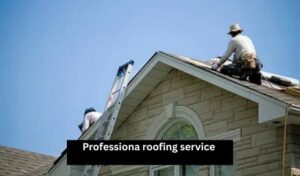
For businesses, the roof is not just a protective layer—it’s a critical investment that safeguards employees, customers, equipment, and operations. Unlike residential properties, commercial roofing systems are larger, more complex, and require specialized expertise. That’s why working with professional commercial roofing contractors is essential for long-term durability and performance.
Key Services Offered by Commercial Roofing Professionals
- Commercial Roof Installation
- Expert installation of systems such as TPO, EPDM, PVC, metal roofing, and built-up roofing.
- Tailored solutions based on your building’s structure, size, and energy needs.
- Commercial Roof Repair
- Fixing leaks, damaged membranes, flashing, or drainage issues.
- Emergency repairs after storms, hail, or wind damage to prevent business downtime.
- Commercial Roof Replacement
- When repair is no longer cost-effective, full roof replacement ensures long-term security.
- Contractors help select durable, energy-efficient roofing materials that fit your budget and goals.
- Roof Coating & Restoration
- Applying elastomeric, silicone, or acrylic coatings to extend the lifespan of existing roofs.
- A cost-effective way to restore protection and efficiency without full replacement.
- Roof Inspections & Preventive Maintenance
- Regular inspections help identify potential problems before they become major expenses.
- Maintenance services such as cleaning drains, sealing seams, and repairing minor issues save money over time.
Benefits of Hiring Professional Roofing Contractors
- Expert Knowledge & Experience – Commercial roofing contractors understand the unique challenges of large-scale roofing systems.
- High-Quality Workmanship – Professional installation ensures proper sealing, drainage, and durability.
- Time & Cost Savings – Avoids costly mistakes that often result from DIY fixes or inexperienced contractors.
- Compliance & Safety – Licensed contractors follow building codes, OSHA standards, and industry best practices.
- Long-Term Reliability – Professionally maintained roofs last longer and deliver better return on investment.
Why It Matters for Businesses
For commercial property owners, roofing problems can disrupt operations, damage inventory, and even force temporary closures. Partnering with a trusted roofing company ensures peace of mind, protects your investment, and keeps your business running smoothly.
7. Latest Trends in Commercial Roofing Solutions
The roofing industry is evolving rapidly, and businesses today have access to advanced solutions that go beyond basic protection. Modern commercial roofing trends focus on sustainability, energy efficiency, and smart technology—helping property owners save money, reduce environmental impact, and enhance long-term performance.
Top Trends in Commercial Roofing
- Energy-Efficient Roofing Systems
- Materials like TPO and reflective coatings reduce heat absorption, lowering cooling costs in large facilities.
- Energy-efficient roofing is a top choice for warehouses, retail stores, and office buildings looking to cut operational expenses.
- Green & Sustainable Roofing
- Green roofs with vegetation provide natural insulation, improve air quality, and reduce stormwater runoff.
- Recycled materials and eco-friendly roofing options align with corporate sustainability goals.
- Solar Roofing Integration
- More businesses are investing in solar panels on commercial roofs to generate renewable energy and reduce electricity bills.
- Solar-ready roofing systems are designed to support heavy panels while maintaining durability.
- Smart Roofing Technology
- Advanced sensors can now detect leaks, moisture buildup, and structural weaknesses early.
- Remote monitoring systems help facility managers stay proactive with roof maintenance.
- Cool Roofing Solutions
- White or reflective roof membranes bounce sunlight away, keeping buildings cooler in hot climates.
- Popular in urban areas where the “heat island effect” raises city temperatures.
- Durable & Long-Lasting Materials
- Metal roofing, PVC membranes, and advanced coatings offer 30–40+ years of protection.
- Businesses are choosing these long-term solutions to avoid frequent replacements.
Why These Trends Matter for Businesses
- Lower operational costs with energy savings.
- Support sustainability initiatives and eco-friendly practices.
- Enhance brand reputation by showcasing environmental responsibility.
- Improve building performance with modern, durable, and low-maintenance systems.
By adopting the latest innovations in commercial roofing, businesses can protect their property, reduce expenses, and contribute to a greener future.
8. Cost Considerations for Commercial Roofing
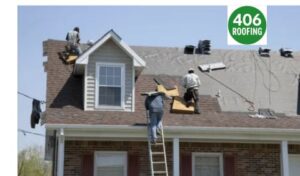
Installing or replacing a commercial roof is a major investment, but one that directly impacts the safety, efficiency, and long-term value of your business property. Understanding the cost factors helps business owners make informed decisions and avoid unnecessary expenses.
Factors That Influence Commercial Roofing Costs
- Roof Size & Design
- Larger commercial buildings, like warehouses or retail centers, require more materials and labor.
- Complex roof designs with slopes, skylights, or HVAC equipment increase installation costs.
- Material Choice
- TPO & EPDM Roofing – Budget-friendly, durable, and energy-efficient.
- PVC Roofing – Slightly higher cost but excellent for restaurants and industrial sites.
- Metal Roofing – Higher upfront investment but can last 40+ years with minimal maintenance.
- Green & Solar Roofing – Premium cost but provides long-term energy savings and tax incentives.
- Labor & Installation
- Hiring licensed commercial roofing contractors ensures quality installation but adds to initial costs.
- Complex installations, such as reinforced flat roofs or solar-ready systems, require skilled labor.
- Repairs vs. Replacement
- Minor roof repairs (fixing leaks, patching membranes, or sealing seams) are cost-effective.
- If the roof is near the end of its lifespan, a roof replacement often saves money long term.
- Maintenance & Inspections
- Regular inspections and preventive maintenance reduce costly emergency repairs.
- Businesses that invest in ongoing roof care spend significantly less over time.
Average Cost Ranges (varies by location & materials)
- Roof repairs: Lower upfront, but may add up if problems are frequent.
- Full roof replacement: Higher initial investment but longer lifespan and better ROI.
- Roof coatings: A mid-range, cost-saving option to extend roof life without total replacement.
Why Cost Should Be Viewed as an Investment
- A well-chosen commercial roofing solution reduces energy bills.
- Durable materials mean fewer disruptions to operations.
- Energy-efficient systems may qualify for tax credits and rebates.
- A high-quality roof increases property value and long-term savings.
In short, while the upfront cost of commercial roofing may seem significant, it should be considered an investment in protection, efficiency, and business continuity.
9. Frequently Asked Questions (FAQs) About Commercial Roofing
1. How long does a commercial roof last?
The lifespan of a commercial roof depends on the material used:
- TPO & PVC roofs: 20–30 years
- EPDM roofs: 25–30 years
- Metal roofing: 40+ years
- Built-up roofing (BUR): 15–20 years
Regular maintenance and inspections can extend these lifespans significantly.
2. What is the best roofing material for commercial buildings?
There’s no single “best” option—it depends on your business needs:
- TPO roofing – Cost-effective and energy-efficient.
- EPDM roofing – Durable and weather-resistant.
- PVC roofing – Ideal for buildings exposed to grease, oil, or chemicals.
- Metal roofing – Long-lasting and low-maintenance.
- Green or solar roofing – Perfect for businesses prioritizing sustainability.
3. How often should a commercial roof be inspected?
Experts recommend at least two inspections per year—typically in the spring and fall. Additional inspections should follow major storms, hail, or heavy snowfall to catch damage early.
4. Should I repair or replace my commercial roof?
- Repair if the damage is minor, localized, and the roof is relatively new.
- Replace if the roof is nearing the end of its lifespan, has widespread damage, or requires frequent costly repairs. A professional commercial roofing contractor can assess which option is most cost-effective.
5. Are energy-efficient roofing systems worth the investment?
Yes. Reflective membranes, cool roofing, and solar roofing can significantly lower utility bills in large commercial spaces. These systems not only reduce operating costs but may also qualify for tax credits and energy rebates.
6. How can I extend the life of my commercial roof?
- Schedule regular roof inspections.
- Keep drains and gutters clear of debris.
- Repair leaks and minor damage promptly.
- Consider roof coatings to restore and protect aging systems.
- Partner with a trusted commercial roofing company for ongoing maintenance.
